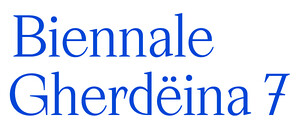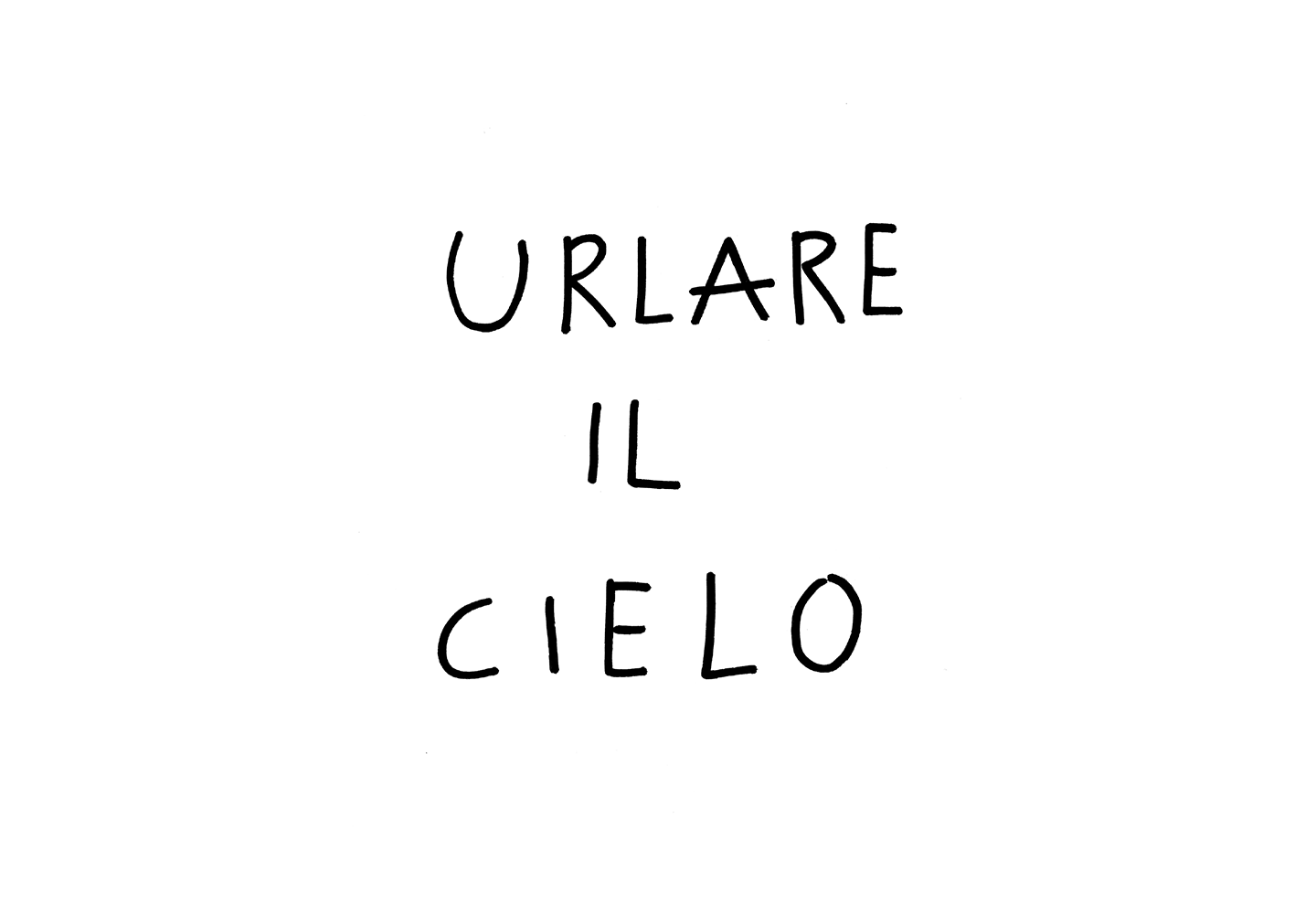– a breath? a name? – the ways of worldmaking
August 8–October 20, 2020
With: Agnieszka Brzeżańska, Brave New Alps, Carlos Bunga, Pavel Büchler, Josef Dabernig, Aron Demetz, Habima Fuchs, Henrik Håkansson, Petrit Halilaj and Alvaro Urbano, Ingrid Hora, Paolo Icaro, Hans Josephsohn, Lang/Baumann, Tonico Lemos Auad, Kris Lemsalu, Sharon Lockhart, Myfanwy MacLeod, Antje Majewski (with Paweł Althamer, Agnieszka Brzeżańska, Alioune Diouf, Cecilia Edefalk, Paweł Freisler, Gregor Prugger), Marcello Maloberti, Franz Josef Noflaner, Paulina Ołowska, Pakui Hardware, Maria Papadimitriou, Nicolas Party, Stefan Rinck, Hermann Josef Runggaldier, Marinella Senatore, Paloma Varga Weisz.
Curated by Adam Budak
Ortisei, Val Gardena, Italy
The Zënza Sëida Cultural Association and the Biennale Gherdëina are proud to announce the inauguration of the 7th edition of the Biennale Gherdëina on Saturday, August 8, 2020 across the public space of Ortisei, Val Gardena, in the picturesque landscape of the Dolomites, the celebrated UNESCO Heritage Site.
The Biennale Gherdëina with its focus on the public space as a stage for sculptural works and community-based, participatory projects, has always been perceived as a celebration of a unique place, its rich culture and a vivid local tradition. The circumstances of the forthcoming edition are particularly challenging. The pandemic crisis made us aware of the vulnerability of humans and nature. Resilience becomes a paramount urgency; the notions of shared responsibility and a humility as an ethical moderator of interpersonal relations gain a particular importance in an attempt to redefine the agencies of responsiveness and care. The Biennale Gherdëina 7 will reflect these concerns as challenges in the active processes of the world’s remaking. Here, the act of breathing (life) and the act of naming (recognition), as highlighted by this year’s Biennale title, constitute the framework of a political nature, the essentials of the “ecology of others”. As such, the Biennale Gherdëina 7th will celebrate the ethic of affirmation. In the words of the philosopher Rosi Braidotti: “we need to borrow the energy from the future to overturn the conditions of the present. It’s called love of the world. (…) Picture what you don’t have yet; anticipate what we want to become. We need to empower people to will, to want, to desire, a different world, to extract from the misery of the present joyful, positive, affirmative relations and practices. Ethics will guide affirmative politics”.
After From Here to Eternity (Biennale Gherdëina 5, 2016) and Writing the Mountains (Biennale Gherdëina 6, 2018), the last and concluding chapter of a trilogy on the politics of belonging, elaborated by the curator Adam Budak, arrives to Val Gardena under a poetic title borrowed from Paul Celan’s 1963 poem, “- a breath? a name? - the ways of worldmaking”. In the forthcoming edition of the Biennale, previously featured thematic fields—the significance of the cultural legacy, the research of historical strategic positioning, the praise of the communal, the omnipresence of the nature and its “industry”—will receive a social and political framing with no ignorance to the poetic, the spiritual and the existential, thus further unfolding the complexity of the vernacular language with an attention paid to the continuity and perseverance of tradition, its necessary rewriting and undoing as well as its transformative potential. The Biennale will focus on the importance and the awareness of a political gesture in an active process of worldmaking, on its dynamic factor that guarantees a resilience of culture and nature, shapes the emancipated vernacular uniqueness of a place and manifests a brave, mature vision of a future to come. Three chapters on sociology of an encounter and the politics of the plural will constitute the core of “the ways of worldmaking”: ecology of others—on reinvigorating the relationality (following the anthropologist Philippe Descola’s reflection upon the nature-culture binary), in praise of hands—on the craft of touch (enhanced by the art historian Henri Focillon’s dream of art’s autonomy within the domains of materials, techniques and signs) and the cloud of possibles—on dissemination of enthusiasm and the power of differentiation (referring to the sociologist and philosopher Maurizio Lazzarato’s shift from capital-labour to capital-life).
As usual, the Biennale Gherdëina will be held outdoors in the public spaces of Ortisei, Val Gardena, in the heart of the “pale mountains” the Dolomites, and in the exhibition space (Sala Luis Trenker), especially adapted for the occasion, as well as in various other venues across the city, including a disused Hotel Ladina which will host a unique project Cinema of Worldmaking by Austrian artist Josef Dabernig (with contributions by, amongst others, Adrian Paci, Korakrit Arunanondchai, Matthew C. Williams, Sharon Lockhart, Mariana Calo and Francisco Queimadela, Marco A. Castillo, and Gabriele Mathes) or the hill of Pilat where German artist Antje Majewski’s Sculpture Forest Sanctuary will be inaugurated with a participation of Cecilia Edefalk, Agnieszka Brzeżańska, Paweł Althamer, Paweł Freisler, Gregor Prugger and Alioune Diouf) and Polish artist Paulina Ołowska’s tableau vivant of “Slavic Goddesses” will be staged. This edition will also involve a number of neighboring villages, including the municipality of Selva where Swedish artist Henrik Håkansson will stage his site-specific project Structural Tree. Over 30 artists of various generations, practicing various media, and from across the globe were invited to this edition of the Biennale—from Vancouver, Canada, Los Angeles, USA over Barcelona, Spain, London and Manchester, the UK, down to Athens, Greece, Vilnius, Lithuania, Prague, Czech Republic, Warsaw, Poland, Berlin, Germany, Vienna, Austria, setting a dialogue with Italian artists as well as the artists from Val Gardena, including Hermann Josef Runggaldier, Aron Demetz, Gregor Prugger or legendary poet and visual artist Franz Josef Noflaner. The artists are mainly focused on sculpture and installation however the Biennale embraces all media, including performance, ephemeral event, film, painting and drawing. The large majority of works on view had been produced in situ, using the local craft and inspired by the site, the cultural tradition and the socio-political context.
Rich program of public events and discursive, cross-disciplinary acts, Biennale Gherdëina ENCOUNTERS, has been drafted by a team of curators and researchers, including Brave New Alps, Sabine Gamper, Karin Pernegger and Adam Budak, and involving local and international cultural producers, artists, scientists, and politicians. See the full program here.
The Biennale Gherdëina 7 visual identity had been elaborated by Bolzano-based graphic design studio LUPO & BURTSCHER in a collaboration with Italian artist Marcello Maloberti whose ongoing project martellate became the Biennale’s platform for voicing the unity of politics and poetics. The sonic element of the Biennale’s identity has been delivered by Italian artist Marinella Senatore who composed the Gherdëina Soundtrack using the musical and sound-components, collected from an open call distributed amongst the local community.
Biennale Gherdëina is organised and supported by the Zënza Sëida Cultural Association and funded by the Trentino-Alto Adige Autonomous Regional Authority, the Bolzano Autonomous Provincial Authority, the communes of the Val Gardena, the tourist associations of the Val Gardena, the Fondazione Sparkasse in Alto Adige, private enterprises and friends of the Biennale Gherdëina.
Biennale Gherdëina is part of BIENNIAL FOUNDATION.

